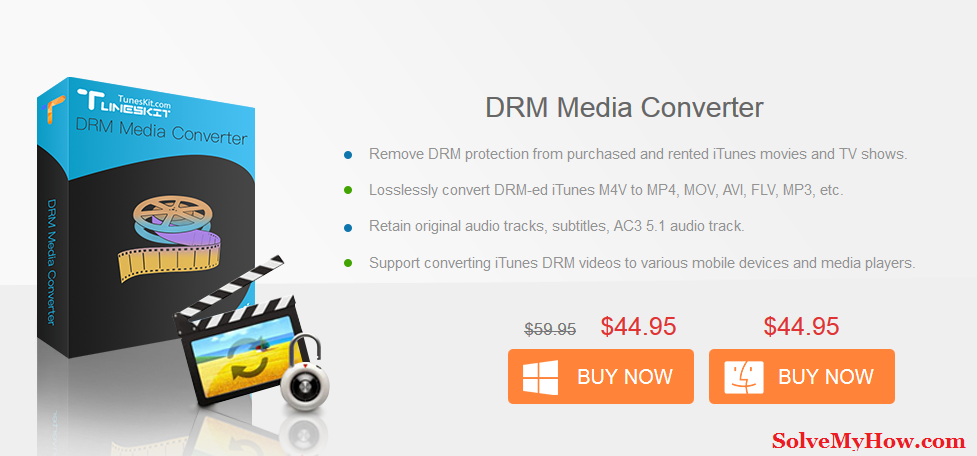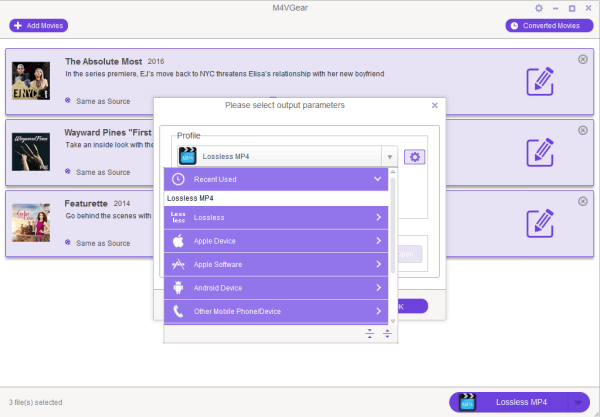
- #DRM MEDIA CONVERTER SERIAL NUMBERS#
- #DRM MEDIA CONVERTER MOVIE#
- #DRM MEDIA CONVERTER SERIAL NUMBER#
- #DRM MEDIA CONVERTER SOFTWARE#
To view the movie, the player must first decrypt the content on the disc. However, this has been circumvented by modifying the firmware of some HD DVD and Blu-ray drives. To read the Volume ID, a cryptographic certificate (the Private Host Key) signed by the AACS LA is required. On Blu-ray discs, the Volume ID is stored in the BD-ROM Mark. The point of this is to prevent simple bit-by-bit copies, since the Volume ID is required (though not sufficient) for decoding content. They cannot be duplicated on consumers' recordable media.
#DRM MEDIA CONVERTER SERIAL NUMBERS#
Volume IDs are unique identifiers or serial numbers that are stored on pre-recorded discs with special hardware.

The manufacturer embeds varying digital watermarks (such as Cinavia) in these sections, and upon subsequent analysis of the pirated release the compromised keys can be identified and revoked (this feature is called Sequence keys in the AACS specifications).
#DRM MEDIA CONVERTER MOVIE#
The standard allows for multiple versions of short sections of a movie to be encrypted with different keys, while a given player will only be able to decrypt one version of each section. Thus, if a given player's keys are compromised and published, the AACS LA can simply revoke those keys in future content, making the keys/player useless for decrypting new titles.ĪACS also incorporates traitor tracing techniques. This approach allows licensors to "revoke" individual players, or more specifically, the decryption keys associated with the player. The approach of AACS provisions each individual player with a unique set of decryption keys which are used in a broadcast encryption scheme.

Furthermore, the inclusion of a shared key across many players makes key compromise significantly more likely, as was demonstrated by a number of compromises in the mid-1990s. In practice, however, revoking all players of a particular model is costly, as it causes many users to lose playback capability. In principle, this approach allows licensors to "revoke" a given player model (prevent it from playing back future content) by omitting to encrypt future title keys with the player model's key. Thus each disc contains a collection of several hundred encrypted keys, one for each licensed player model. Content is encrypted under the title-specific key, which is itself encrypted under each model's key. Under CSS, all players of a given model group are provisioned with the same shared activated decryption key. The principal difference between AACS and CSS (the DRM system used on DVDs and CDs) lies in how the device decryption keys and codes are organized.
#DRM MEDIA CONVERTER SERIAL NUMBER#
Title keys are decrypted using a combination of a media key (encoded in a Media Key Block) and the Volume ID of the media (e.g., a physical serial number embedded on a pre-recorded disc). It encrypts content under one or more title keys using the Advanced Encryption Standard (AES). System overview Encryption ĪACS uses cryptography to control and restrict the use of digital media.

#DRM MEDIA CONVERTER SOFTWARE#
Since appearing in devices in 2006, several AACS decryption keys have been extracted from software players and published on the Internet, allowing decryption by unlicensed software. AACS has been operating under an "interim agreement" since the final specification (including provisions for Managed Copy) has not yet been finalized. It is developed by AACS Licensing Administrator, LLC (AACS LA), a consortium that includes Disney, Intel, Microsoft, Panasonic, Warner Bros., IBM, Toshiba and Sony. The specification was publicly released in April 2005 and the standard has been adopted as the access restriction scheme for HD DVD and Blu-ray Disc (BD). The Advanced Access Content System ( AACS) is a standard for content distribution and digital rights management, intended to restrict access to and copying of the post- DVD generation of optical discs.


 0 kommentar(er)
0 kommentar(er)
